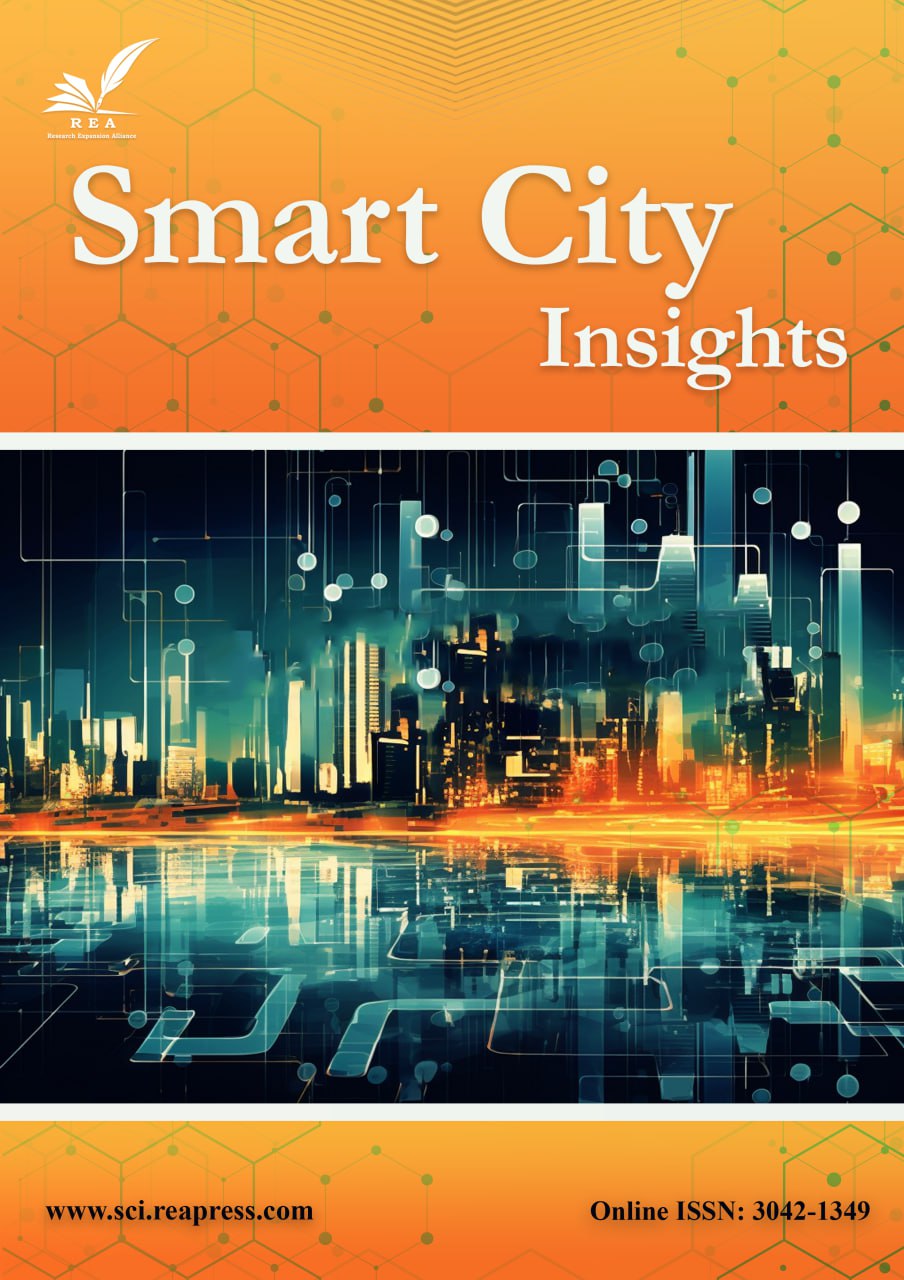AI and IoT-Based Environmental Protection in Smart Urban Areas
Abstract
Environmental degradation seriously threatens urban areas, with rapid urbanization worsening problems such as air pollution, waste overflow, and water scarcity. Advanced technologies, especially Artificial Intelligence (AI) and the Internet of Things (IoT), have shown promise in addressing these challenges by facilitating real-time environmental monitoring and effective resource management. This research explores how AI and IoT can be applied in smart cities, focusing on air quality management, waste management, and water conservation. By examining urban case studies and utilizing AI-driven analytics on data generated by IoT, we reveal practical insights for promoting urban sustainability. The findings demonstrate notable advancements in pollution control, resource efficiency, and urban resilience by integrating AI and IoT. This paper discusses the current challenges and looks ahead to the potential of AI and IoT in environmental protection, suggesting ways to scale these technologies for wider use.
Keywords:
Artificial intelligence, Internet of things, Smart cities, Environmental protection, Waste managementReferences
- [1] Hoang, T. Van. (2024). Impact of integrated artificial intelligence and internet of things technologies on smart city transformation. Journal of technical education science, 19(1), 64–73. https://doi.org/10.54644/jte.2024.1532
- [2] Alahi, M. E. E., Sukkuea, A., Tina, F. W., Nag, A., Kurdthongmee, W., Suwannarat, K., & Mukhopadhyay, S. C. (2023). Integration of IoT-enabled technologies and artificial intelligence (AI) for smart city scenario: recent advancements and future trends. Sensors, 23(11), 5206. https://doi.org/10.3390/s23115206
- [3] Yao, Y. (2022). A review of the comprehensive application of big data, artificial intelligence, and internet of things technologies in smart cities. Journal of computational methods in engineering applications, 2(1), 1–10. https://doi.org/10.62836/jcmea.v2i1.0004
- [4] Salama, R., Mohapatra, H., Tülbentçi, T., & Al-Turjman, F. (2025). Deep learning technology: enabling safe communication via the internet of things. Frontiers in communications and networks, 6, 1416845. https://doi.org/10.3389/frcmn.2025.1416845
- [5] Khan, W. Z., Rehman, M. H., Zangoti, H. M., Afzal, M. K., Armi, N., & Salah, K. (2020). Industrial internet of things: recent advances, enabling technologies and open challenges. Computers and electrical engineering, 81, 106522. https://doi.org/10.1016/j.compeleceng.2019.106522
- [6] Popescu, S. M., Mansoor, S., Wani, O. A., Kumar, S. S., Sharma, V., Sharma, A., … & Chung, Y. S. (2024). Artificial intelligence and IoT driven technologies for environmental pollution monitoring and management. Frontiers in environmental science, 12, 1336088. https://doi.org/10.3389/fenvs.2024.1336088
- [7] Chen, Z., Hao, X., Zhang, X., & Chen, F. (2021). Have traffic restrictions improved air quality? A shock from COVID-19. Journal of cleaner production, 279, 123622. https://doi.org/10.1016/j.jclepro.2020.123622
- [8] Gaur, L., Afaq, A., Arora, G. K., & Khan, N. (2023). Artificial intelligence for carbon emissions using system of systems theory. Ecological informatics, 76, 102165. https://doi.org/10.1016/j.ecoinf.2023.102165


